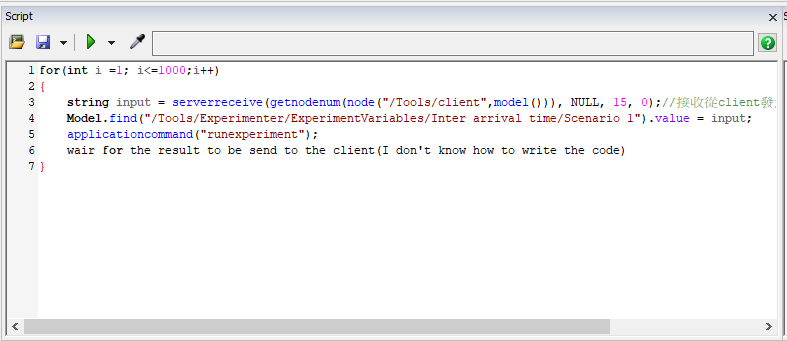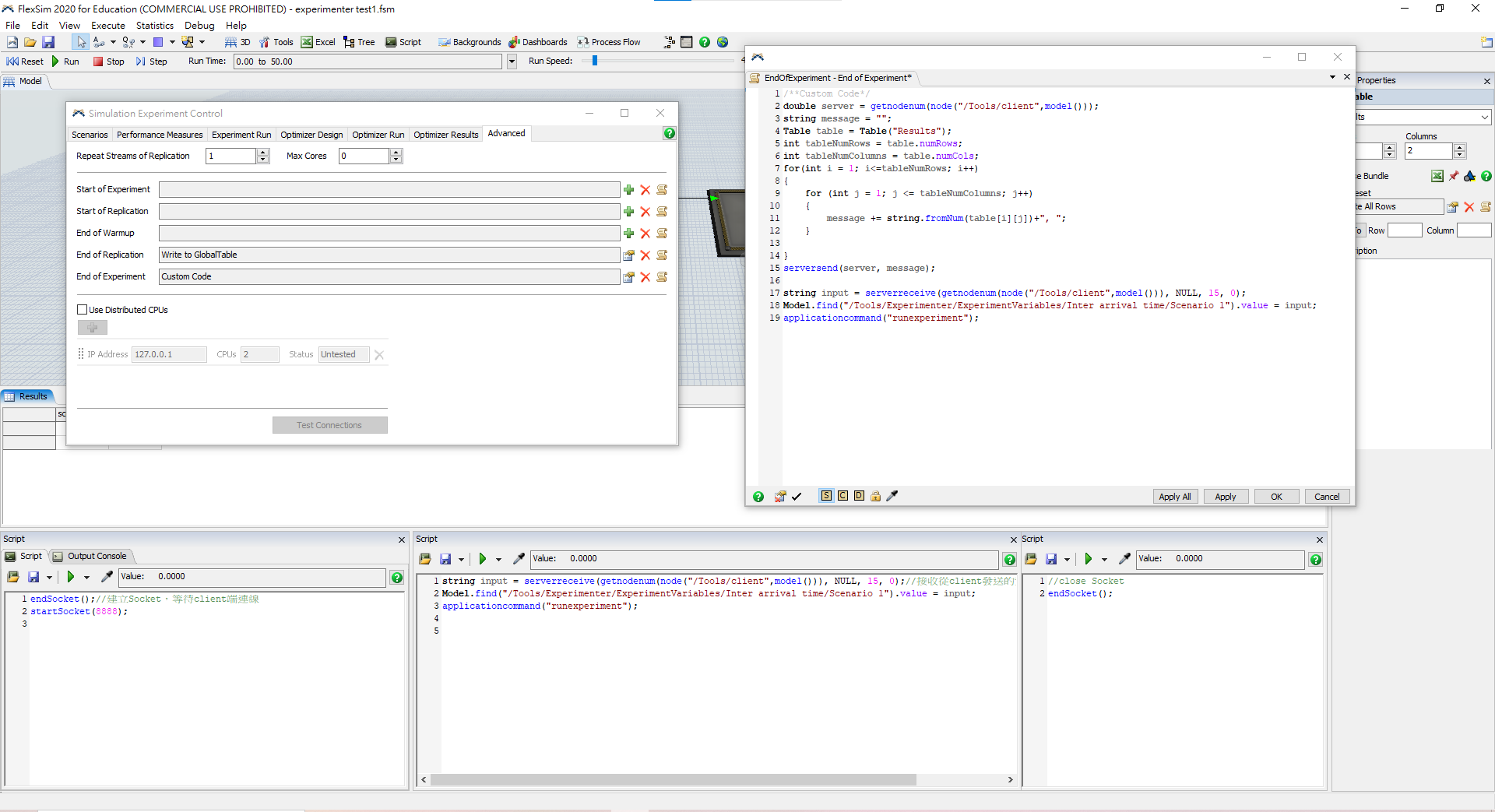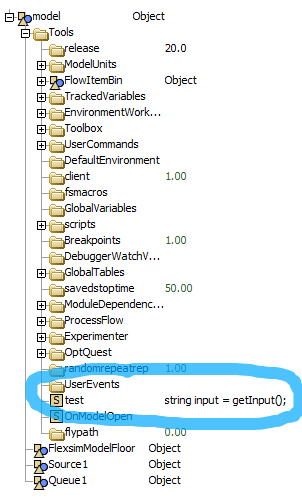My flexsim version is 2020
The flexsim file is server
The python file is client
At the beginning, the message is sent from the client to the server , and then the server applies the message to the experimenter .
The result is sent to the client , after the experimenter ends .
My purpose is I want the process to be repeated until the result sent from the server is what the client wants
I write a loop.
When the code ends the first loop, it runs the next loop, but loop didn't work.
I think the problem is the need to wait for the result to be send to the client before starting the next loop.
Maybe I can add a trigger(On serversend trigger) via flexscript How to do?
How to modify the flexscript that waits until the server send the result to the client ??




